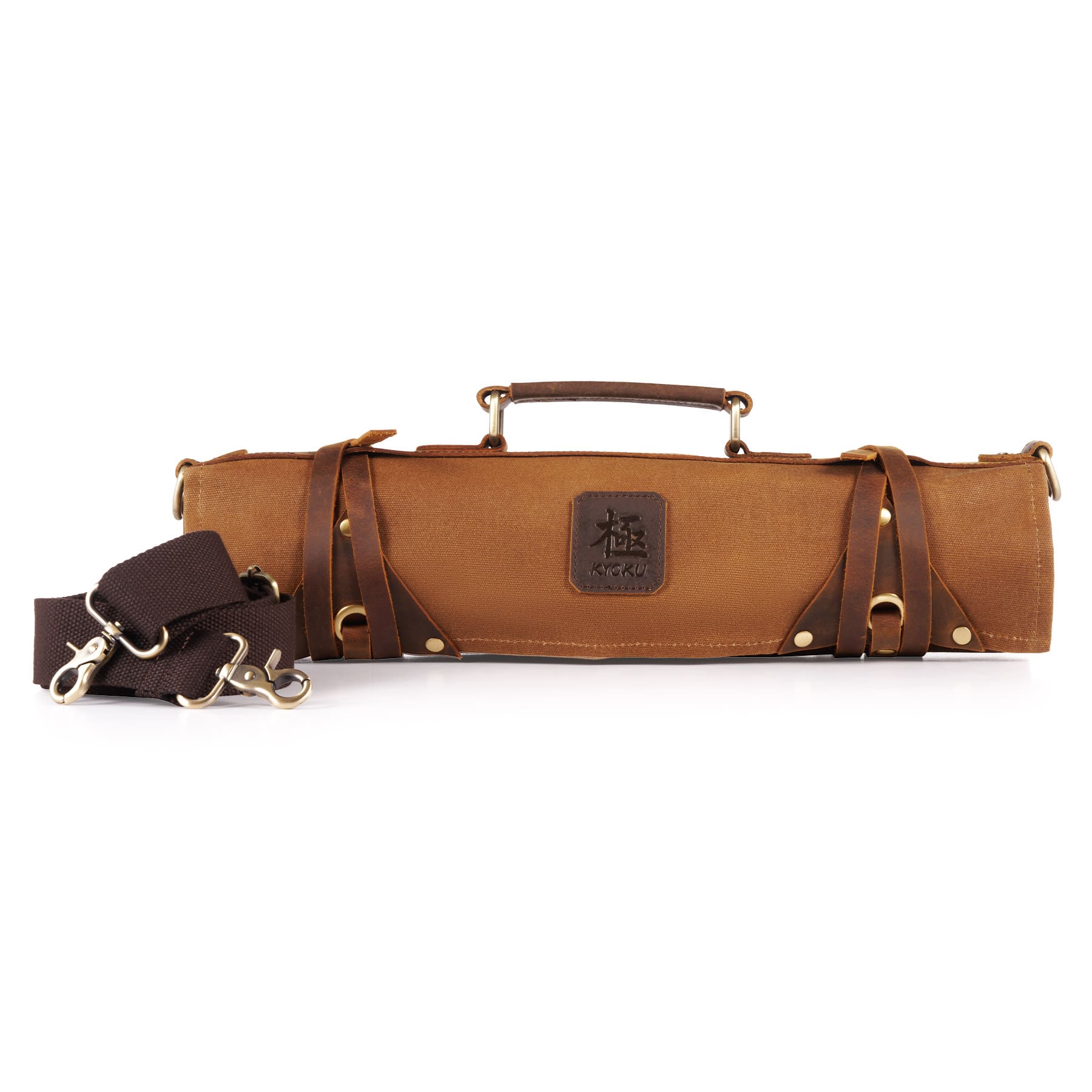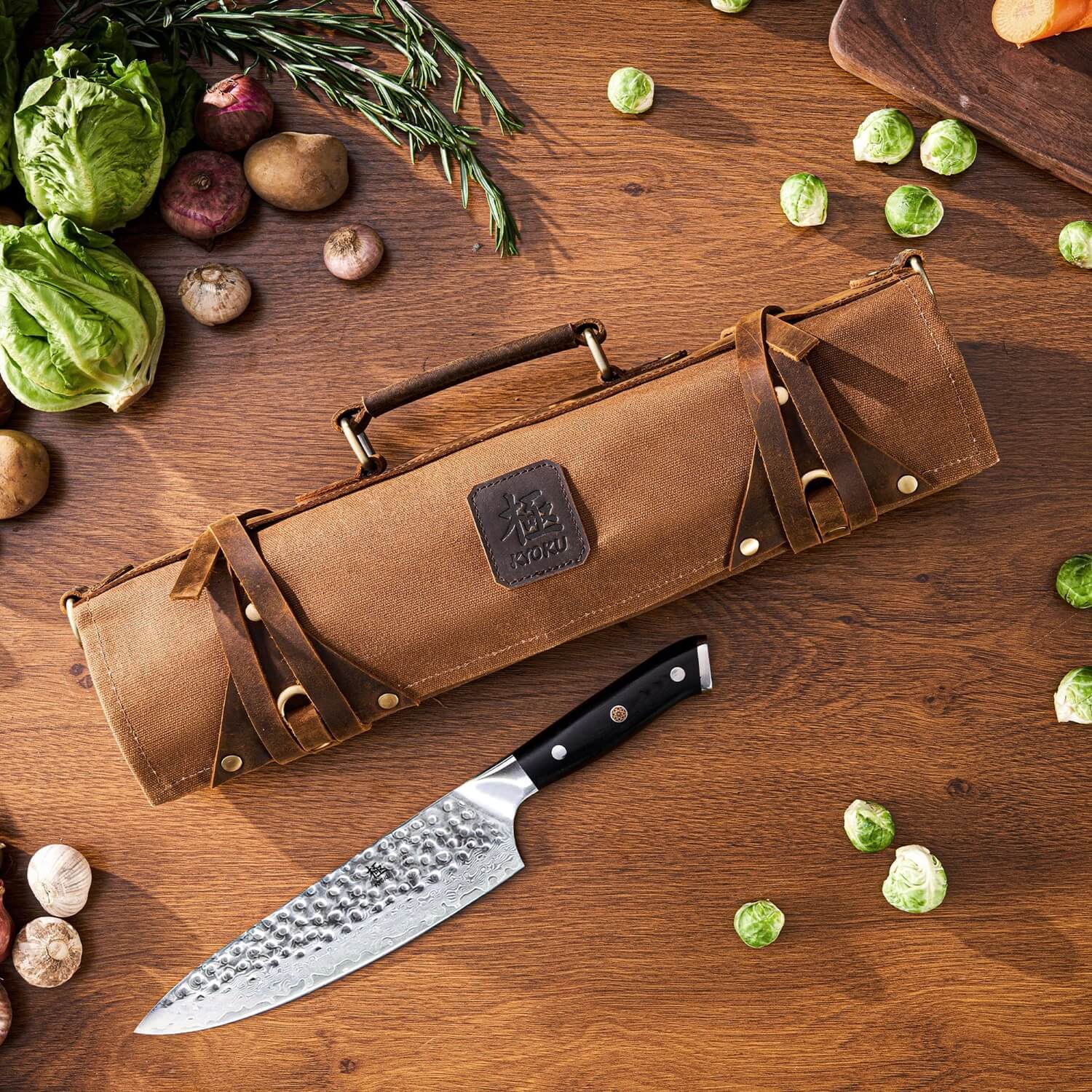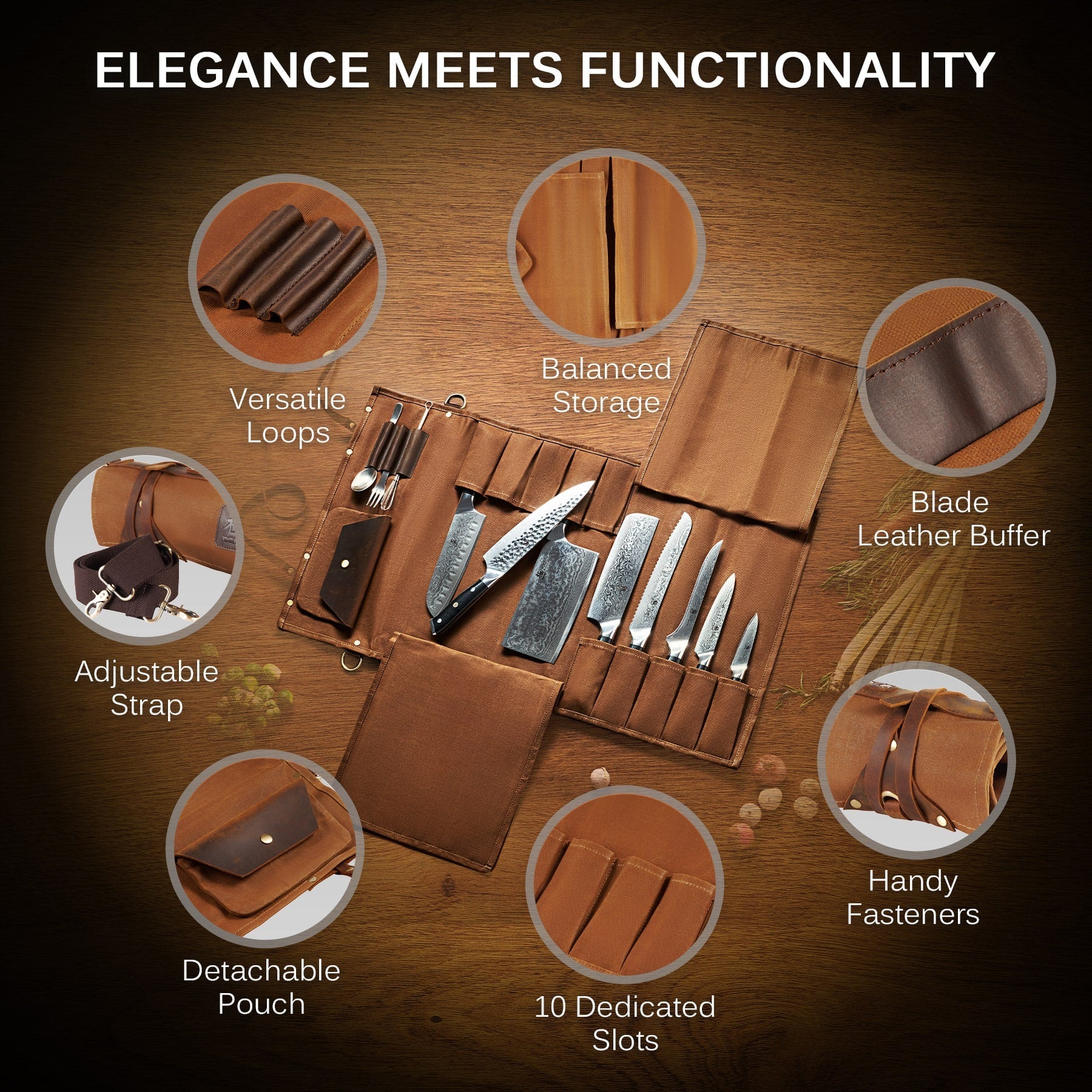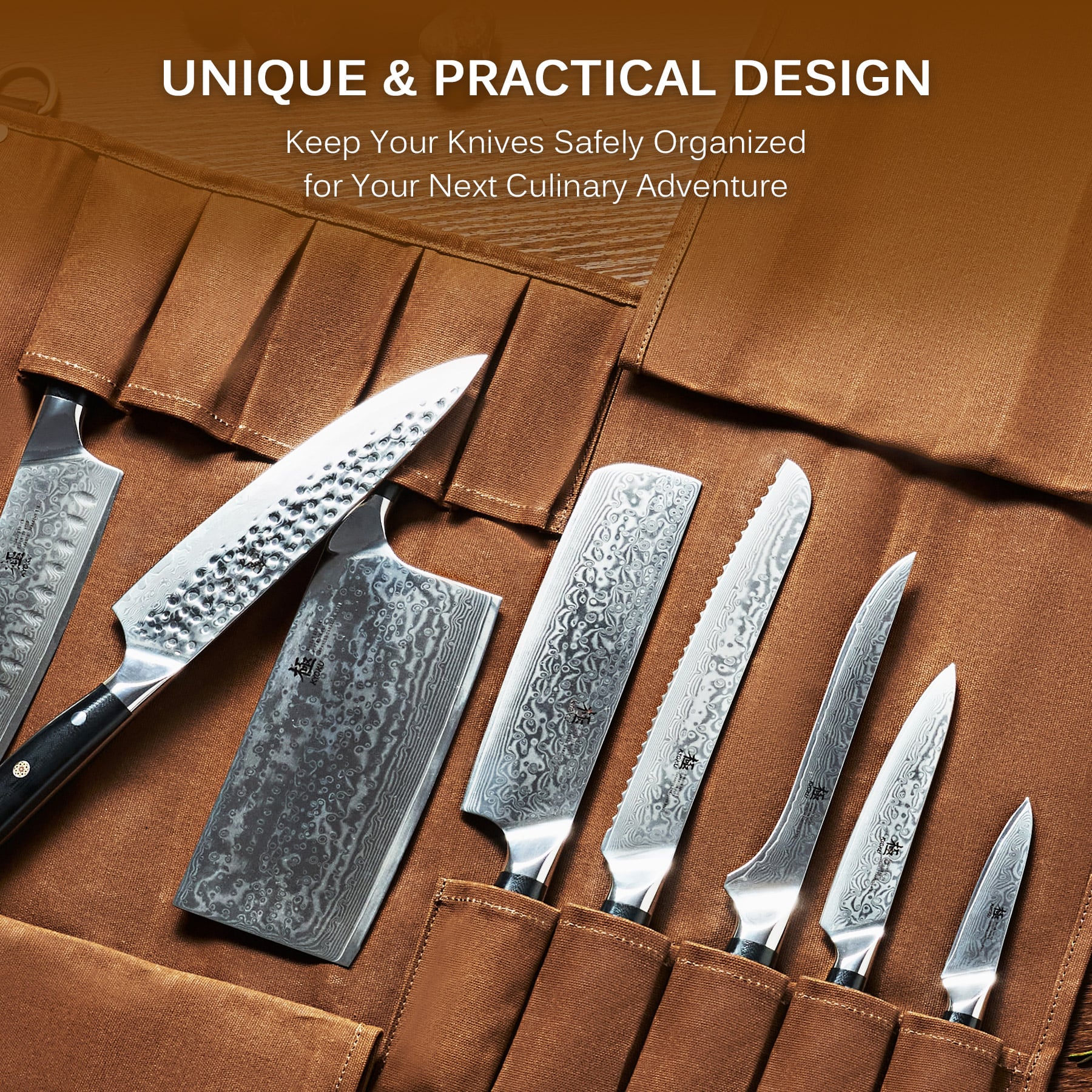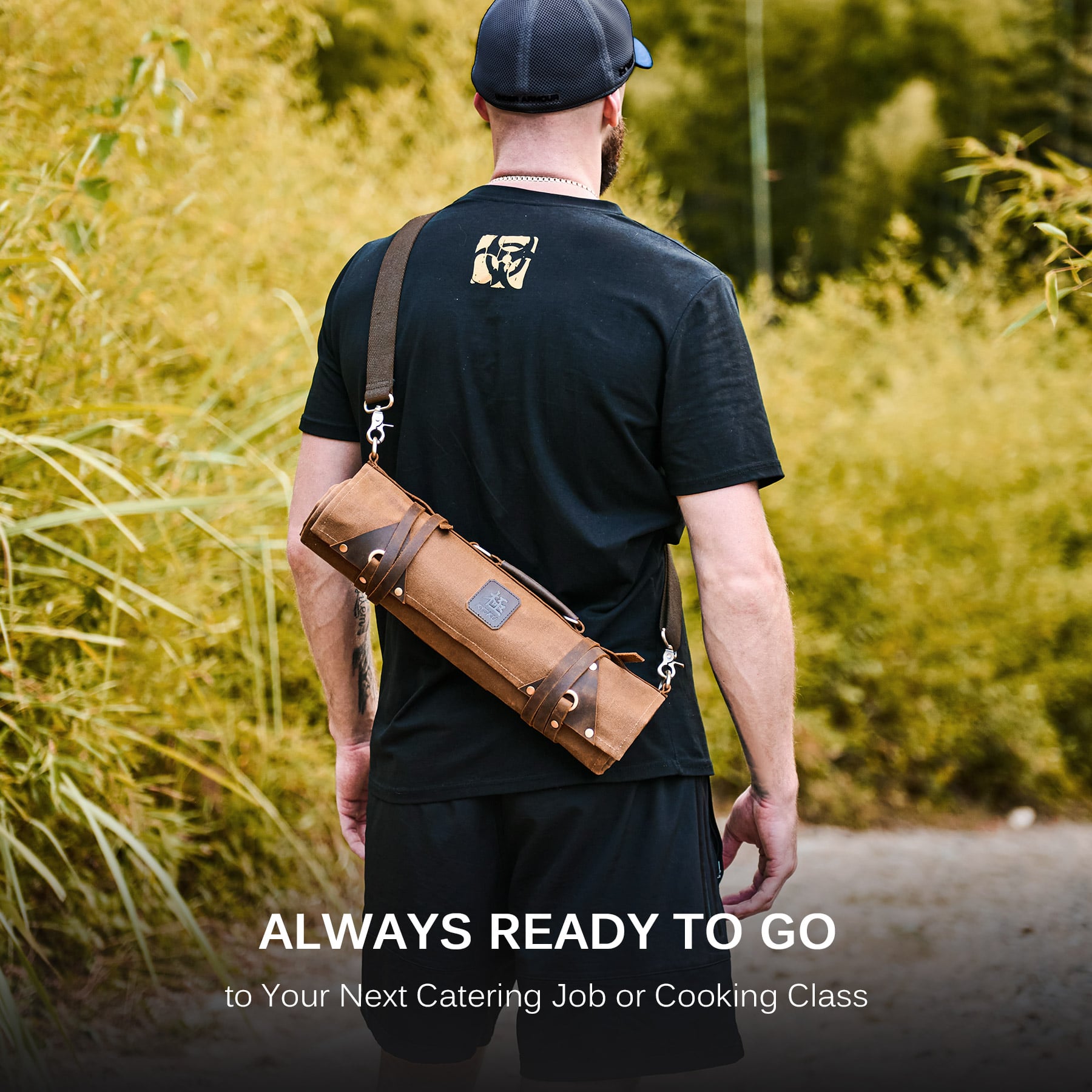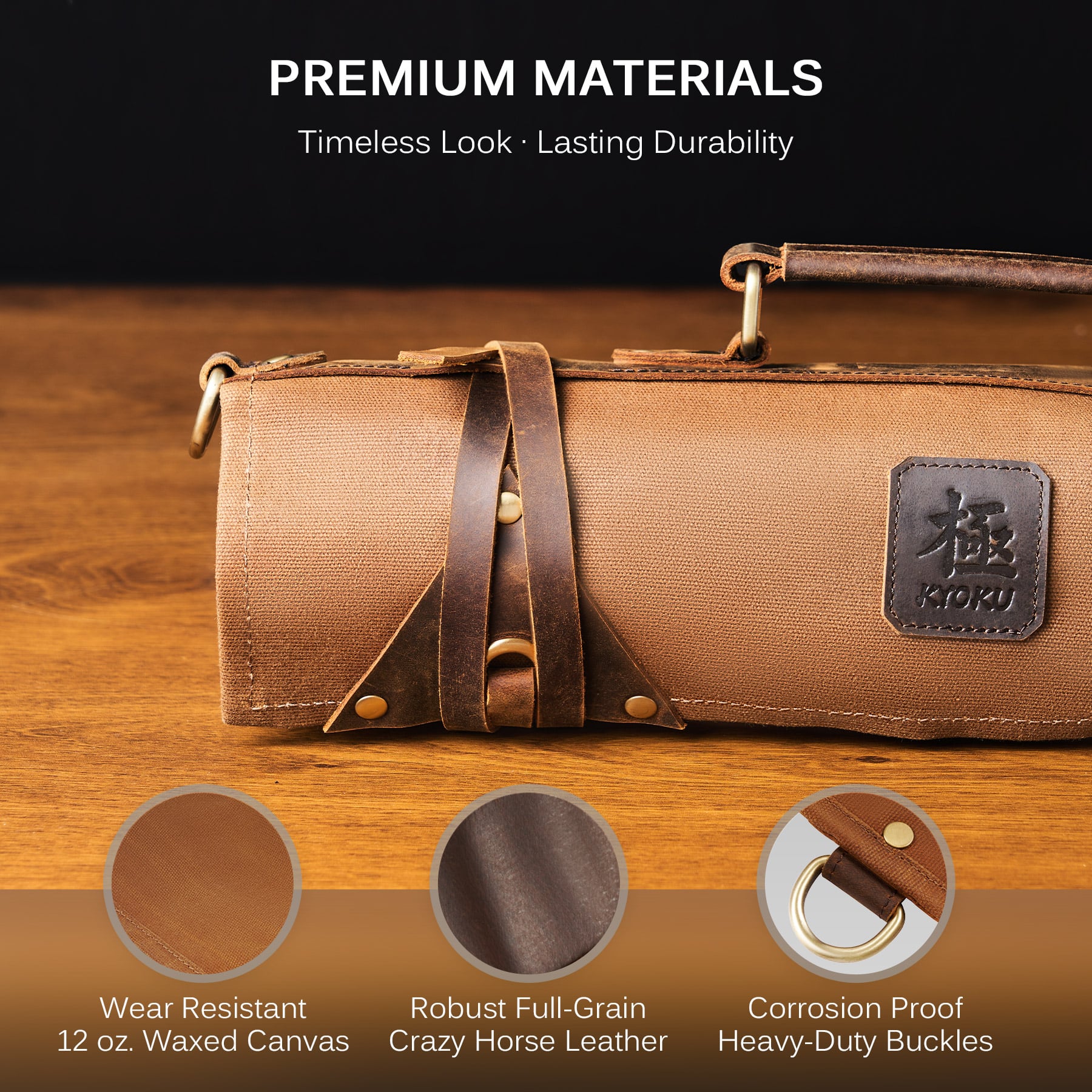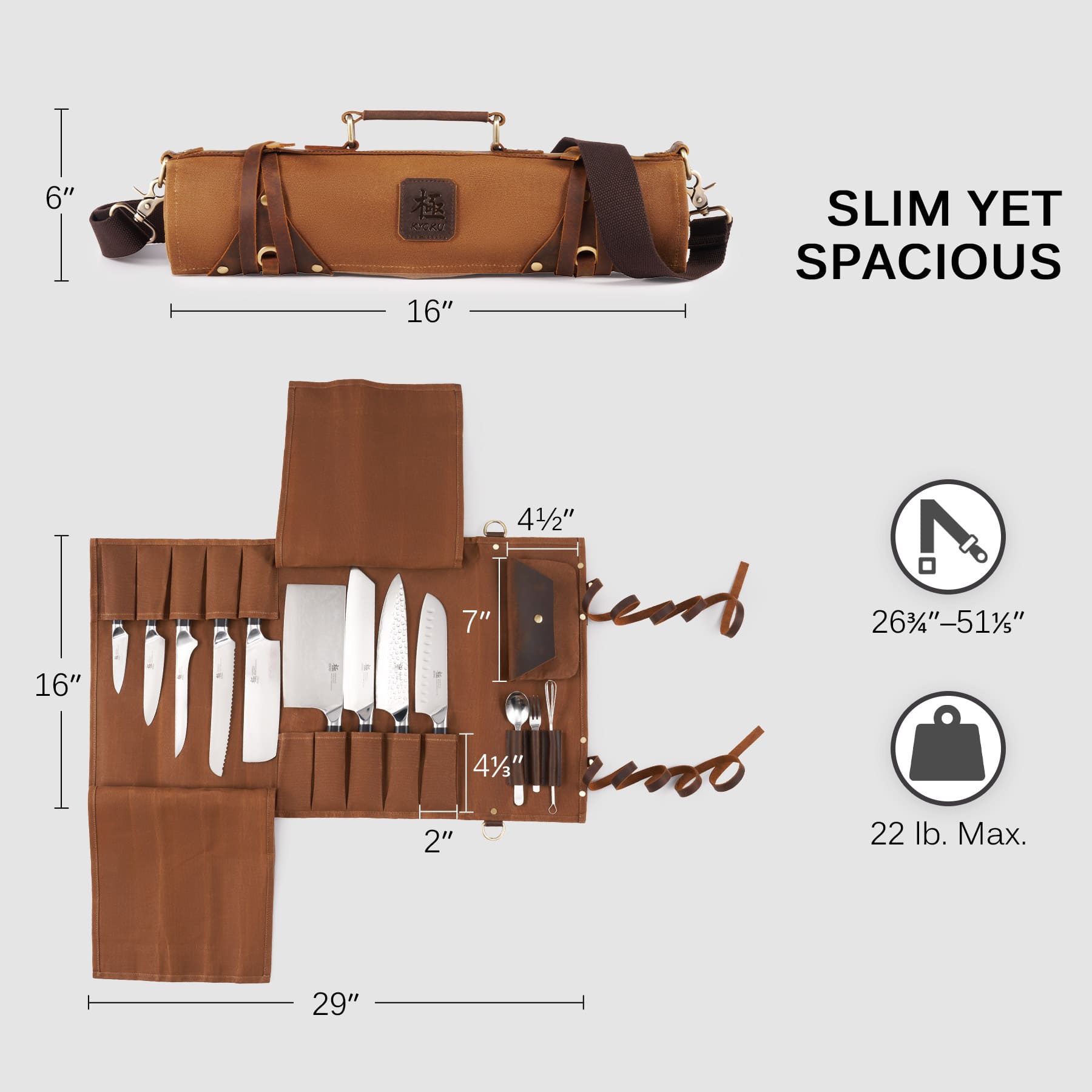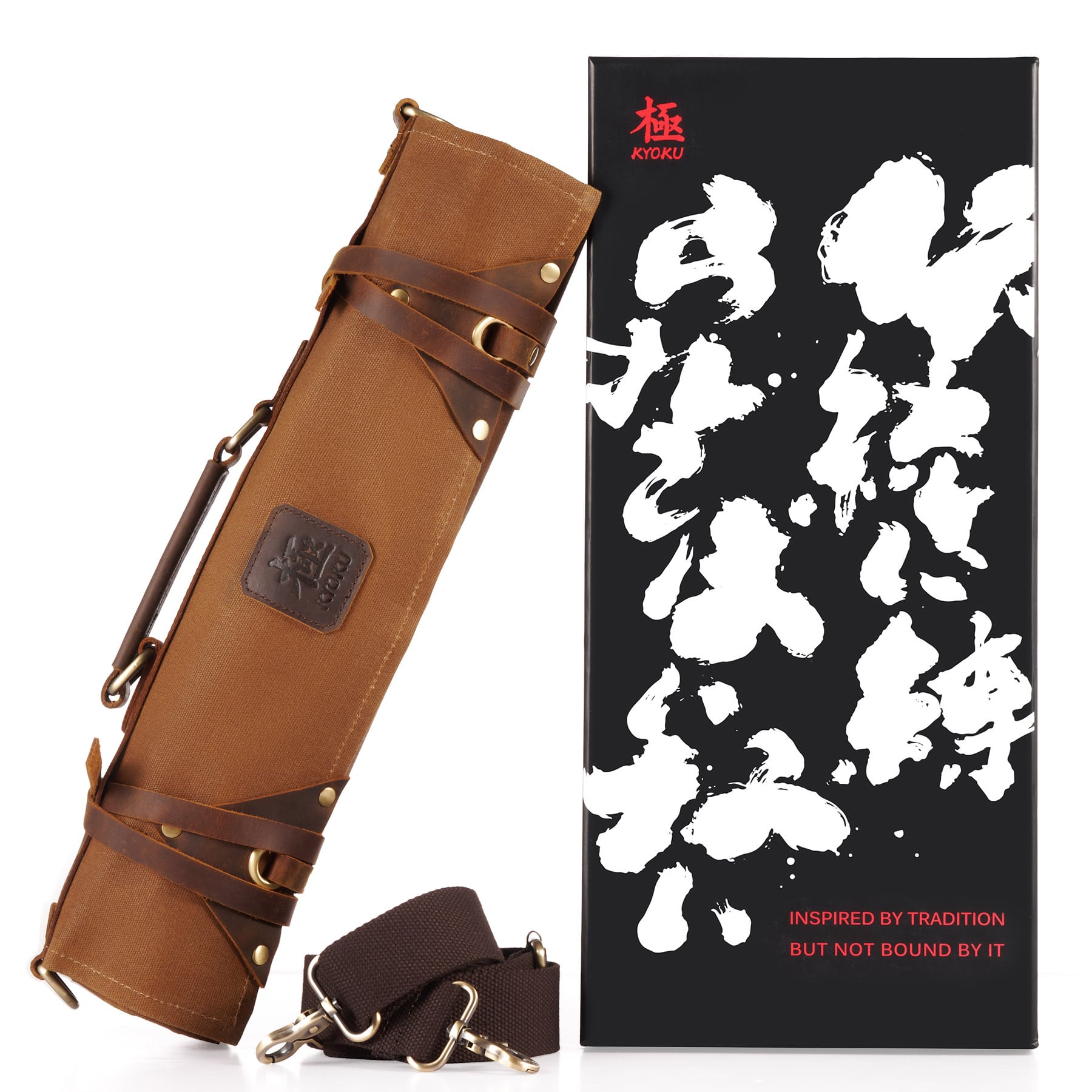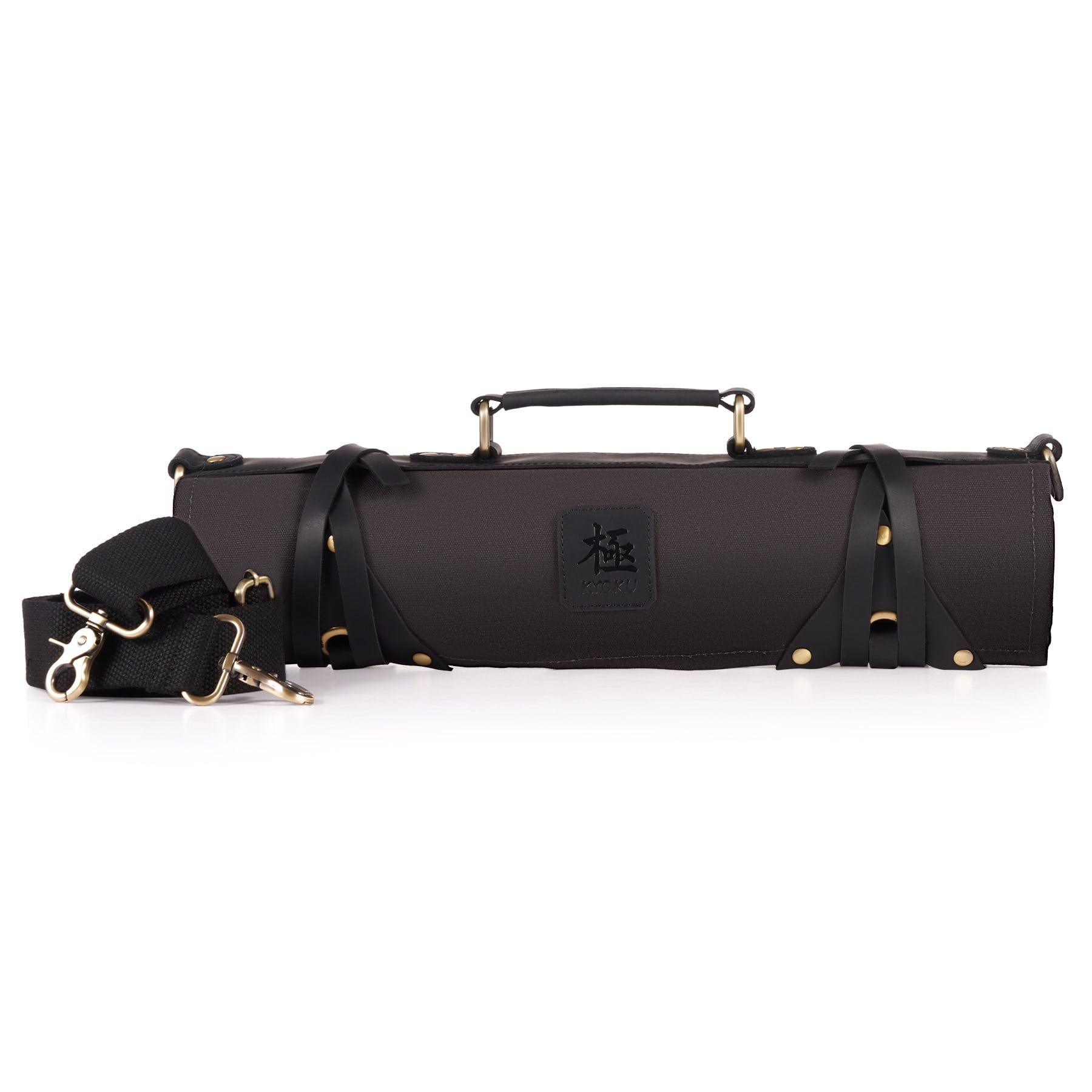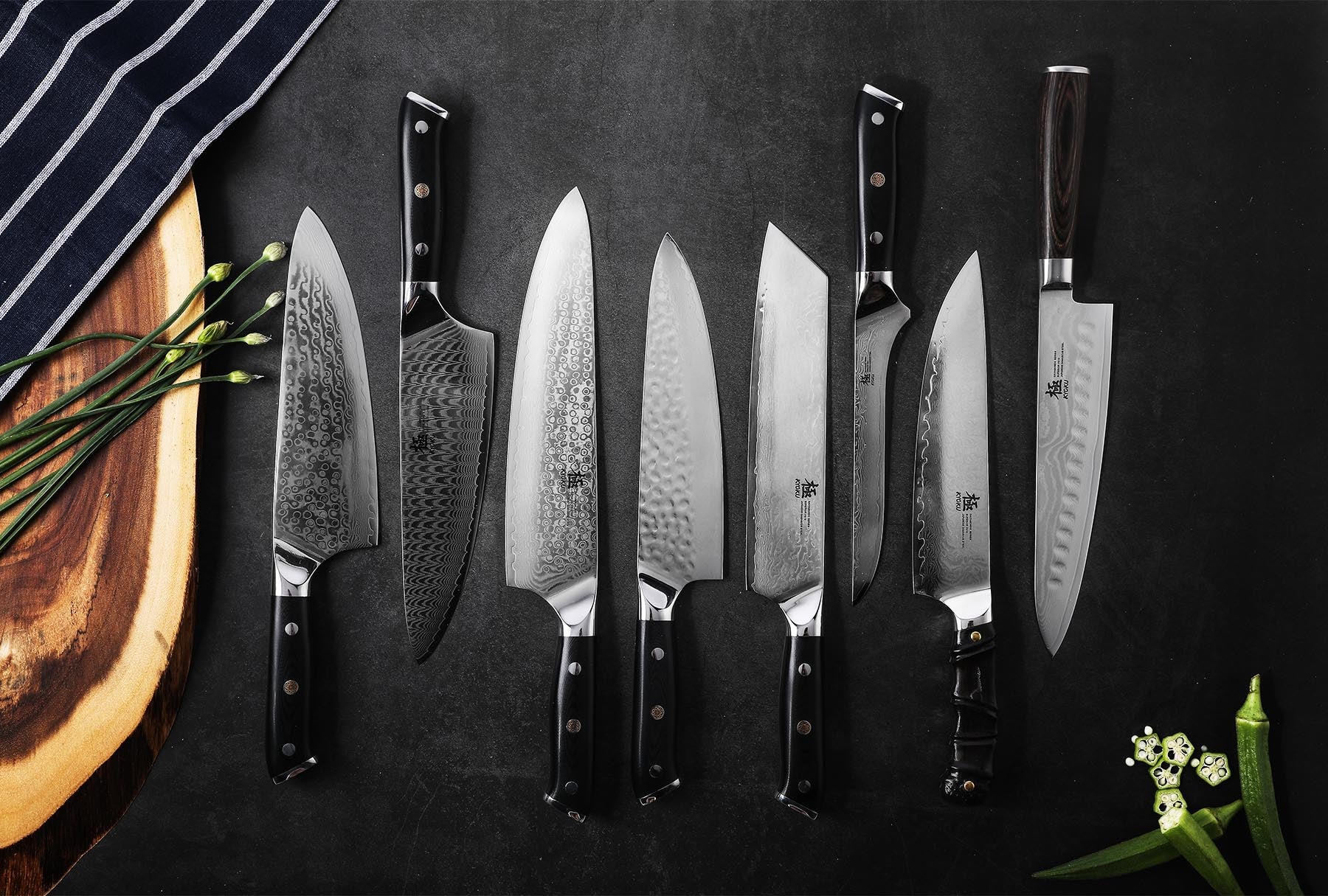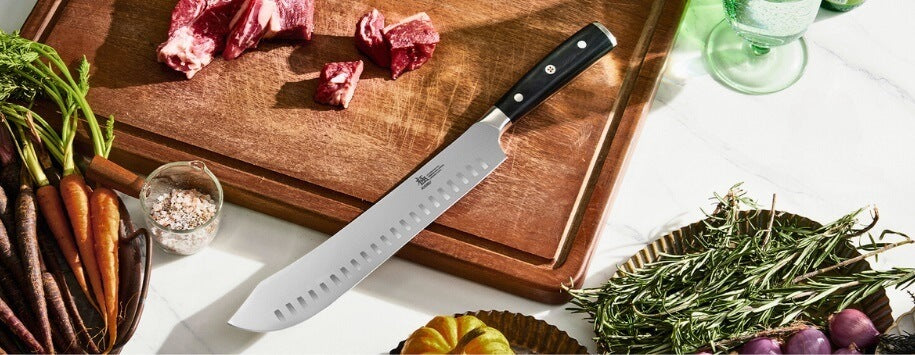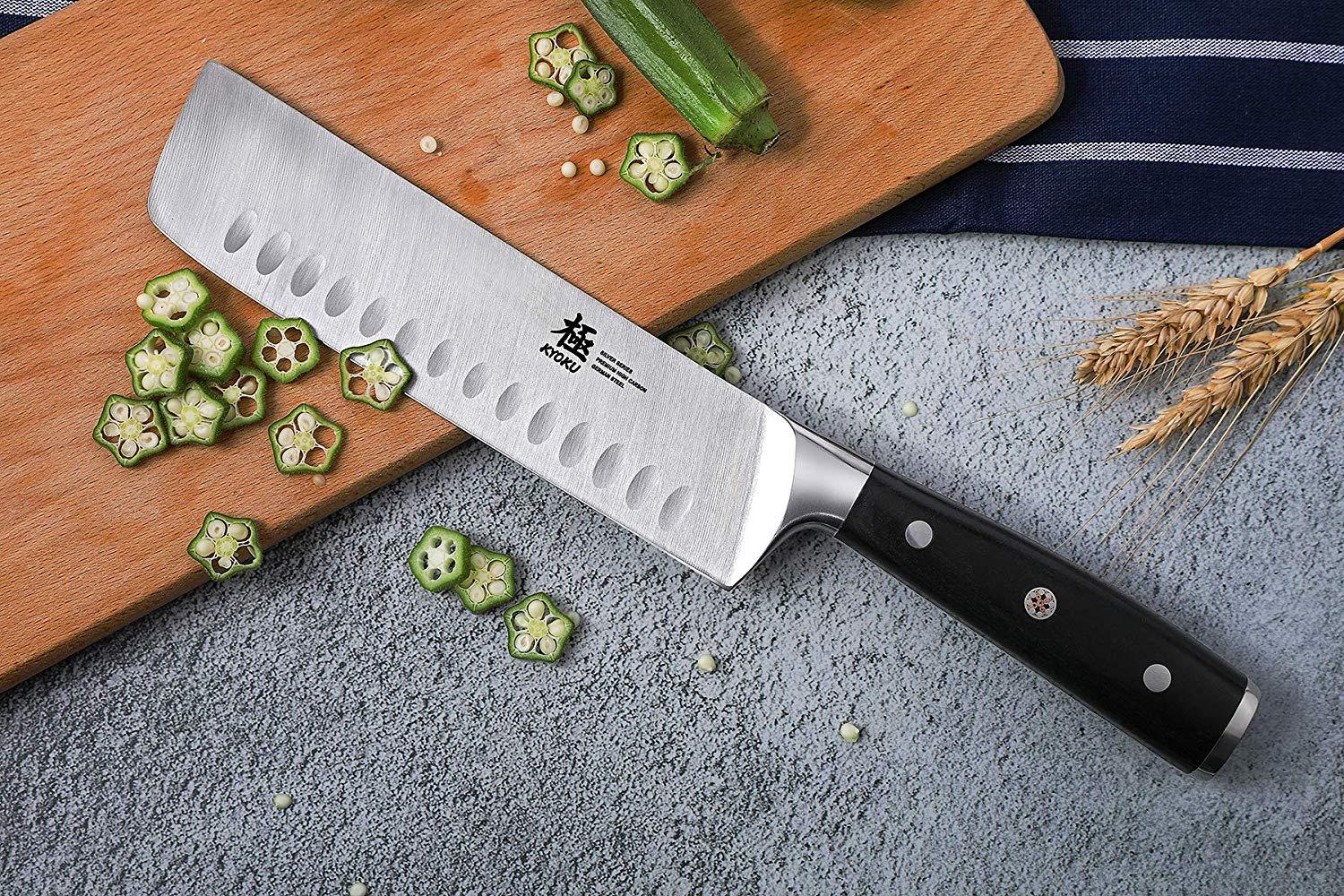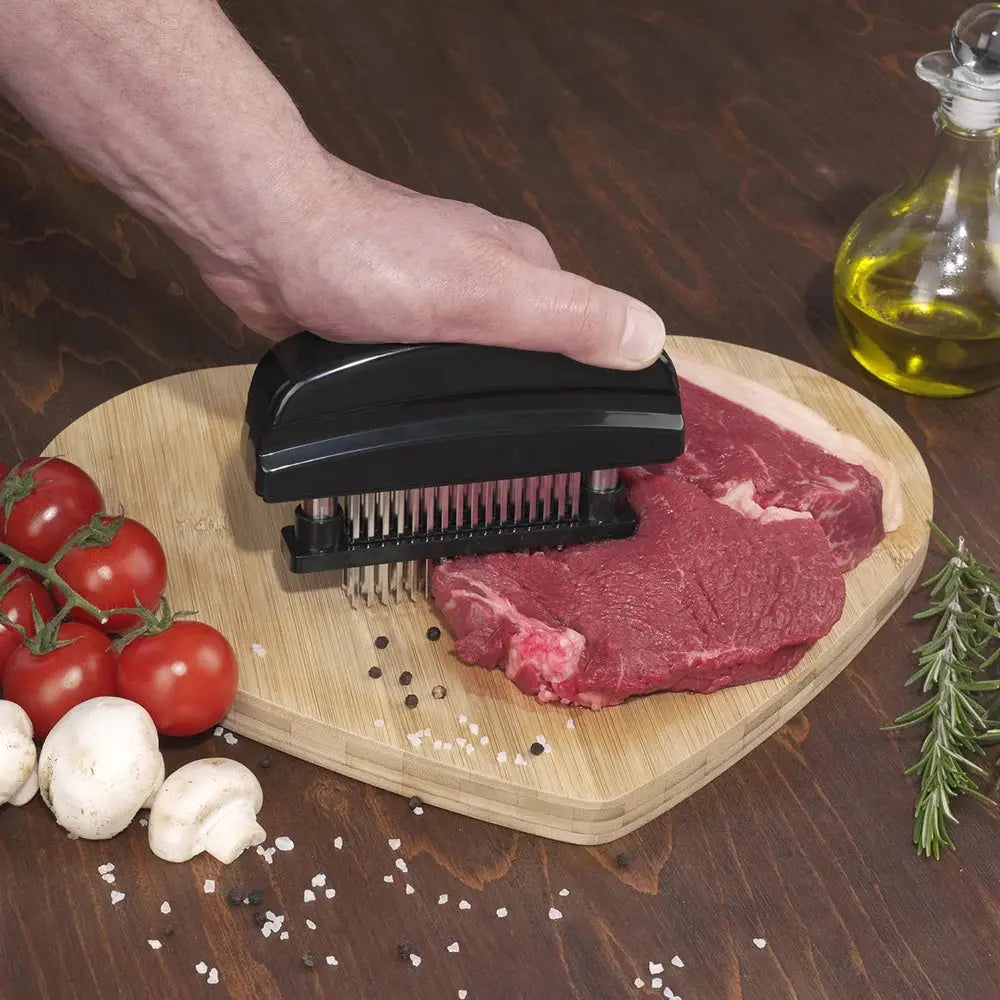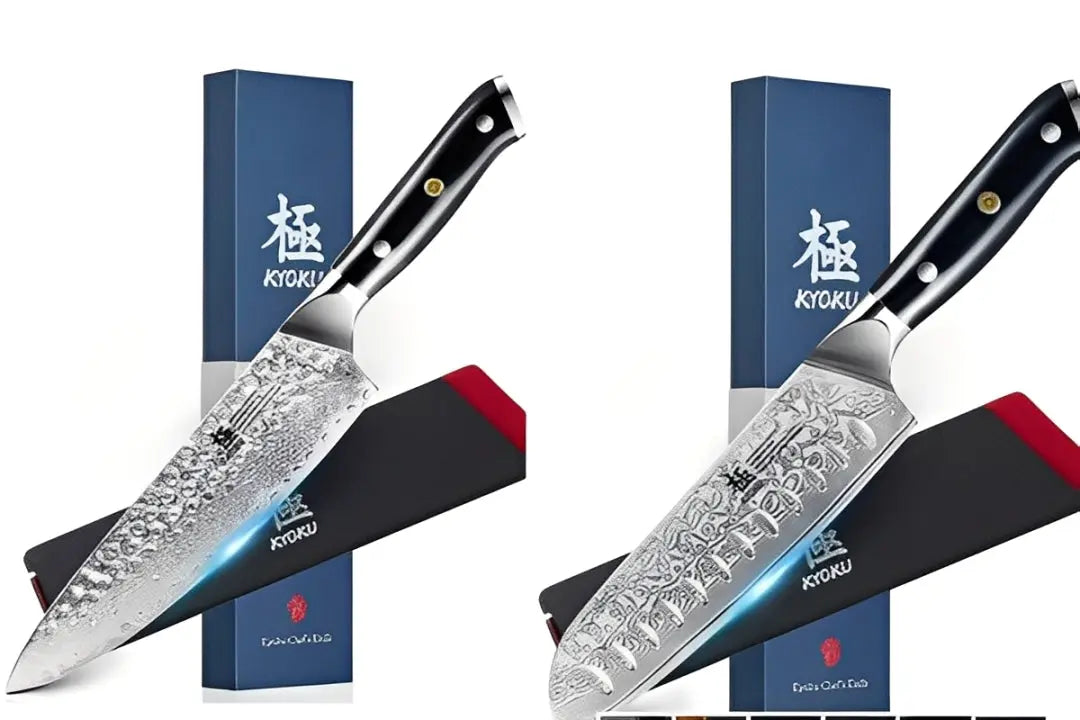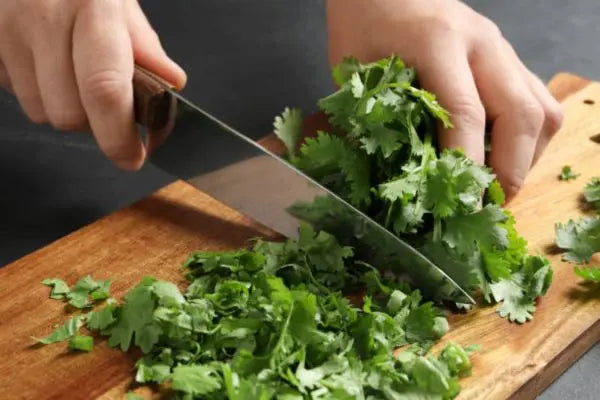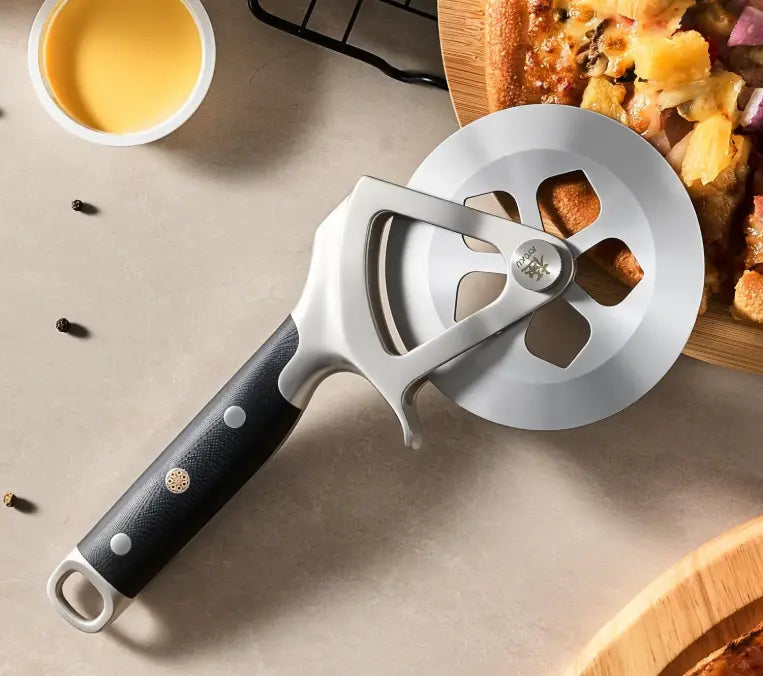Ideal for both professional chefs and culinary enthusiasts, this spacious and eye-catching roll bag holds 10 knives up to 15″ long, while the 3 utility loops and detachable pocket offer more spots for additional cutlery or utensils.
The adjustable shoulder strap and leather handle provide ease and comfort, whether for catering, transport, or storage, this versatile knife and cutlery organizer is sure to fit your needs. Its superior waxed canvas ensures durable and lasting service, while the crazy horse leather reinforcements keep it strong, flexible, and stylish.















